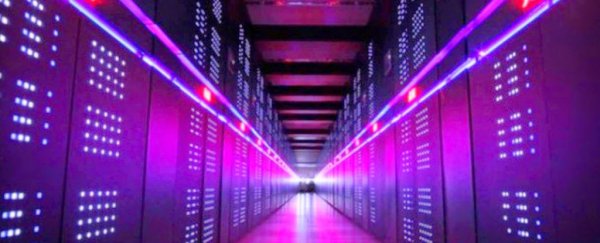The Tianhe-2 is officially the most powerful computer in the world, which marks the sixth time in row that the Chinese supercomputer has topped the biannual supercomputer charts, put together by research body Top500. What's more, China has almost tripled the number of entries it has on the list - from 37 to 109 - in the space of just six months.
If the raw statistics are of interest, Tianhe-2 (which translates to "Milky Way-2" in English) boasts over 3 million cores and a maximum score of 33.86 petaflops per second (that's quadrillions of floating point operations or calculations per second). The machine is some way ahead of the second placed supercomputer, the US's Titan Cray XK7, which has 560,640 cores and a maximum of 17.59 petaflops per second, according to Top500.
To put that in some kind of context, the souped-up, super-expensive MacPro that Apple has on sale for US$3,000-4,000 maxes out at 7 teraflops of power. In other words, that's about 4,811 times slower than the Tianhe-2. These are rough calculations, but you get an idea of the sort of power we're talking about. Whether you'd be able to order your own Tianhe-2 from the National University of Defence Technology in China is another question.
Rounding out the top 10 are four more computers from the US and one apiece from Japan, Switzerland, Germany, and Saudi Arabia. The majority of these machines are developed by academic institutions or government defence agencies, put to work on the most challenging tasks known to science. The US's Titan computer, for example, has tackled a number of complex projects including climate modelling and laser fusion.
The Tianhe-2 has been the reigning champion since June 2013, and more than 1,300 scientists and engineers were involved in its development. Perhaps the only criticism you could level at the supercomputer is that it's quite hard to code for: the South China Morning Post quotes one expert as saying it could take some users several years to write a suitable program for Tianhe-2.
Meanwhile work continues on the next generation of supercomputers, which may involve at least some element of quantum computing. This would mean a complete rethink about the way computers work and are put together, and researchers from Microsoft have suggested the technology could be ready for widespread use in the next ten years. Essentially, 'quantum bits' would take the place of the electrical circuits we use today - if we can work out how to build them.
